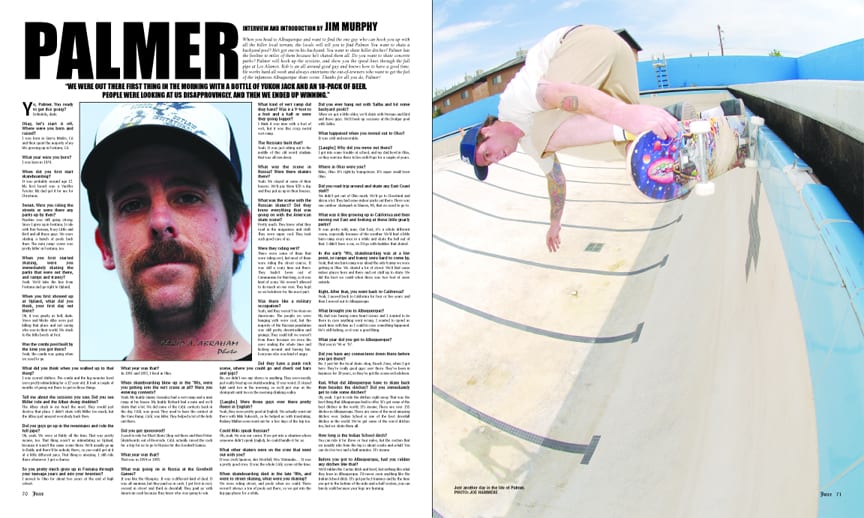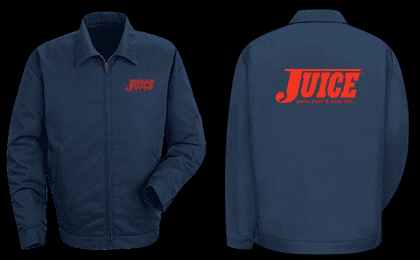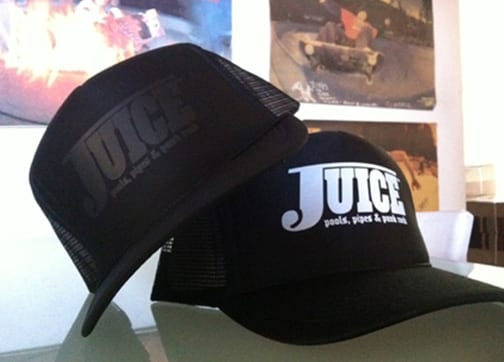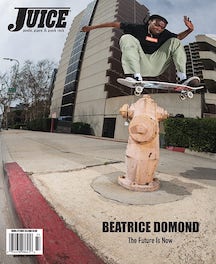INTERVIEW BY JIM MURPHY
INTRODUCTION BY JIM MURPHY
PHOTOS BY FARID ABRAHAM AND JOE HAMMEKE
When you head to Albuquerque and want to find the one guy who can hook you up with all the killer local terrain, the locals will tell you to find Palmer. You want to skate a backyard pool? He’s got one in his backyard. You want to skate killer ditches? Palmer has the beeline to miles of them because he’s skated them all. Do you want to skate concrete parks? Palmer will hook up the sessions, and show you the speed lines through the full pipe at Los Alamos. Rob is an all around good guy and knows how to have a good time. He works hard all week and always entertains the out-of-towners who want to get the feel of the infamous Albuquerque skate scene. Thanks for all you do, Palmer.
“There are over 155 ditches in Albuquerque. There are some of the most amazing ditches ever. Indian School is one of the best downhill ditches in the world.”
Yo, Palmer. You ready to get this going?
Definitely, dude.
Okay, let’s start it off. Where were you born and raised?
I was born in Sierra Madre, CA and then spent the majority of my life growing up in Fontana, CA.
What year were you born?
I was born in 1974.
When did you first start skateboarding?
It was probably around age 12. My first board was a Variflex Twister. My dad got it for me for Christmas.
Sweet. Were you riding the streets or were there any parks up by then?
Pipeline was still going strong. Since I grew up in Fontana, I rode with Ron Yerman, Tracy Little and Bird and all those guys. We were skating a bunch of pools back then. The mini ramp scene was pretty killer in Fontana, too.
When you first started skating, were you immediately skating the parks that were out there, and ramps and tranny?
Yeah. We’d take the bus from Fontana and go right to Upland.
When you first showed up at Upland, what did you think, your first day out there?
Oh, it was gnarly as hell, dude. Steve and Micke Alba were just killing that place and not caring who was in their world. We stuck to the little bowls at first.
Was the combi pool built by the time you got there?
Yeah, the combi was going when we used to go.
What did you think when you walked up to that thing?
I was scared shitless. The combi and the big monster bowl were pretty intimidating for a 12-year-old. It took a couple of months of going out there to get in those things.
Tell me about the sessions you saw. Did you see Miller ride and the Albas doing doubles?
The Albas stuck in my head the most. They would just destroy that place. I didn’t skate with Miller too much, but the Albas just amazed everybody back then.
Did you guys go up in the mountains and ride the full pipe?
Oh, yeah. We were at Baldy all the time. That was pretty insane, too. That thing wasn’t as intimidating as Upland, because it wasn’t the same scene there. We’d usually go up to Baldy and there’d be nobody there, so you could get at it at a little different pace. That thing is amazing. I still ride there whenever I get a chance.
So you pretty much grew up in Fontana through your teenage years and into your twenties?
I moved to Ohio for about two years at the end of high school.
What year was that?
In 1991 and 1992, I lived in Ohio.
When skateboarding blew up in the ’80s, were you getting into the vert scene at all? Were you entering contests?
Yeah. My buddy Jimmy Gonzalez had a vert ramp and a mini ramp at his house. My buddy Richard had a mini and we’d skate that a lot. We did some of the CASL contests back in the day. CASL was great. They used to have the contest at the Vans Ramp. CASL was killer. They helped a lot of the kids out there.
Did you get sponsored?
I used to ride for Blast Skate Shop out there and then Poker Skateboards out of Riverside. CASL actually raised the cash for a trip for us to go to Russia for the Goodwill Games.
What year was that?
That was in 1994 or 1995.
What was going on in Russia at the Goodwill Games?
It was like the Olympics. It was a different kind of deal. It was all amateur, but they paid us in cash. I got first in vert, second in street and third in downhill. They paid us with American cash because they knew who was going to win.
What kind of vert ramp did they have? Was it a 9-foot to a foot and a half or were they going bigger?
I think it was nine with a foot of vert, but it was this crazy metal vert ramp.
The Russians built that?
Yeah. It was just sitting out in the middle of this old weird stadium that was all run down.
What was the scene in Russia? Were there skaters there?
Yeah. We stayed at some of their houses. We’d pay them $20 a day and they put us up in their houses.
What was the scene with the Russian skaters? Did they know everything that was going on with the American skate scene?
Pretty much. They knew what they read in the magazines and stuff. They were super cool. They took such good care of us.
Were they riding vert?
There were some of them that were riding vert, but most of them were riding the street course. It was still a scary time out there. They hadn’t been out of Communism for that long, so it was kind of scary. We weren’t allowed to do much on our own. They kept us on lockdown for the most part.
Was there like a military occupation?
Yeah, and they weren’t too keen on Americans. The people we were hanging with were cool, but the majority of the Russian population was still pretty downtrodden and grumpy. They could tell we weren’t from there because we were the ones smiling the whole time and kicking around and having fun. Everyone else was kind of angry.
Did they have a punk rock scene, where you could go and check out bars and gigs?
No, we didn’t see any shows or anything. They were mostly just really fired up on skateboarding. It was weird. It stayed light until two in the morning, so we’d just stay at the skatepark until two in the morning drinking vodka.
[Laughs] Were those guys over there pretty fluent in English?
Yeah, they were pretty good at English. We actually went out there with Miki Vukovich, so he helped us with translating. Rodney Mullen even went out for a few days of the trip too.
Could Miki speak Russian?
Oh, yeah. He was our savior. If we got into a situation where someone didn’t speak English, he could handle it for us.
What other skaters were on the crew that went out with you?
It was Josh Spencer, Jim Westfall, Wes Watanabe… It was a pretty good crew. It was the whole CASL scene at the time.
When skateboarding died in the late ’80s, and went to street skating, what were you skating?
We were riding street, and pools when we could. There weren’t always a ton of pools out there, so we got into the big gap phase for a while.
Did you ever hang out with Salba and hit some backyard pools?
When we got a little older, we’d skate with Yerman and Bird and those guys. We’d hook up sessions at the Dodger pool with Salba.
What happened when you moved out to Ohio?
It was cold and miserable.
[Laughs] Why did you move out there?
I got into some trouble at school, and my dad lived in Ohio, so they sent me there to live with Pops for a couple of years.
Where in Ohio were you?
Niles, Ohio. It’s right by Youngstown. It’s super small town Ohio.
Did you road trip around and skate any East Coast stuff?
We didn’t get out of Ohio much. We’d go to Cleveland and Akron a lot. They had some indoor parks out there. There was one outdoor skatepark in Sharon, PA, that we used to go to.
What was it like growing up in California and then moving out East and looking at these little gnarly parks?
It was pretty wild, man. Out East, it’s a whole different scene, especially because of the weather. We’d find a little barn ramp every once in a while and skate the hell out of that. I didn’t have a car, so I’d go with buddies that skated.
In the early ’90s, skateboarding was at a low point, so ramps and tranny were hard to come by.
Yeah, that one barn ramp was about the only tranny we were getting in Ohio. We skated a lot of street. We’d find some indoor places here and there and set stuff up to skate. We did the best we could when there was two feet of snow outside.
Right. After that, you went back to California?
Yeah, I moved back to California for four or five years and then I moved out to Albuquerque.
What brought you to Albuquerque?
My dad was having some heart issues and I wanted to be there in case anything went wrong. I wanted to spend as much time with him as I could in case something happened. He’s still kicking, so it was a good thing.
What year did you get to Albuquerque?
That was in ’96 or ’97.
Did you have any connections down there before you got there?
No. I just hit the local skate shop, Beach Zone, when I got here. They’re really good guys over there. They’ve been in business for 30 years, so they’ve got the scene on lockdown.
Rad. What did Albuquerque have to skate back then besides the ditches? Did you immediately get to ride some ditches?
Oh, yeah. I got to ride the ditches right away. That was the best thing that Albuquerque had to offer. It’s got some of the best ditches in the world. It’s insane. There are over 155 ditches in Albuquerque. There are some of the most amazing ditches ever. Indian School is one of the best downhill ditches in the world. We’ve got some of the worst ditches too, but we skate them all.
How long is the Indian School ditch?
You can ride it for three or four miles, but the section that we usually ride from the top is about a mile-and-a-half. You can do it in two and a half minutes. It’s insane.
Before you got to Albuquerque, had you ridden any ditches like that?
We’d ridden the Cactus ditch and bowl, but nothing like what they have in Albuquerque. I’d never seen anything like the Indian School ditch. It’s got perfect trannies and by the time you get to the bottom of the mile-and-a-half section, you can barely walk because your legs are burning.
[Laughs] Sick, man. When you got there, was there any kind of concrete skatepark or backyard pool scene?
There was a decent backyard pool scene out there. It’s not Southern California or anything, but we’ve always been able to muster up five or six good pools a year. There was a vert ramp when I moved here. This guy Schmitty had a 10-foot vert ramp in his backyard.
So you got some vert sessions in?
Yeah. We’ve got a killer vert ramp now. Abe’s got that vert ramp at his parents’ house. It’s 46-feet wide and 12-feet tall with a foot and a half of vert and it’s all Skatelite.
How’s that thing ride?
That thing is insane. It’s so good.
Were you getting enough guys out there to ride that thing?
It’s hit or miss. They’ll be a bunch of guys out there for a few months and then it dies out for a little bit, and then we’ll ramp it back up. Now we have Alamosa too and it’s got some vert on it and a full pipe.
Were you there when the Los Altos Skatepark was first built?
Yeah. I was taking photos when they were pouring concrete.
How did that park come about? Was that something that the community pushed for?
Yeah, it was a bunch of skateboarders, and the city wanted to build a park, so everyone got together and put in some input. They got McIntyre and those guys at Site Design to design it, and then they had some local crews pour it. That’s why it’s kind of lumpy.
Were you involved in any aspect of that?
No, I hadn’t been here very long at that point, so I hadn’t met a ton of people. It made a nice welcome gift though.
[Laughs] Yeah. Then Alamosa came up a few years after that.
Yeah. Alamosa has been there about three years now. Los Altos has been there nine years now. That was one of the first skateparks in our region. We were still going to Durango to skate, after they built that crappy concrete park.
Who built Alamosa?
That was California Skateparks.
Describe that park to people.
It’s amazing. It’s got a couple of really big deep bowls all linked together with a full pipe and another 9-foot bowl. They did a 3/4 pipe instead of a full pipe, so that the cops could still see at night when they come out with their helicopter. That tells you what kind of neighborhood it’s in. They wanted the ghetto bird to be able to see in at night.
[Laughs] I think they built it like that, so that when you’re doing your frontside airs at 12 o’clock, they can get better shots of you.
[Laughs] Yeah. That’s right. It’s good for that neighborhood though. It gives those kids something healthy and active to do so they can wear themselves out skating at the park instead of ripping people’s shit off.
Do you see any turn around with the local kids in the neighborhood? Do you see more of the local kids skating?
That’s mostly what it is. A bunch of us older guys go out there, but there are a ton of local kids skating it. It’s great. That’s the same thing that happened in Los Altos. There were kids that were 7 or 8-year-old when that place opened and now they’re out there just killing it. I’ve seen kids grow up at that park. Their parents just drop them off there like it’s a babysitter. Three or four years later, those kids are just destroying it.
Albuquerque seems like it has a huge skate scene.
Yeah. There’s a lot of good shit to skate out here and the weather is good most of the year, so we can skate pretty much year round. Even in the dead of winter, we’re in the backyard with the torch burning the ice off the pool so we can skate it.
FOR THE REST OF THE STORY, ORDER ISSUE #66 BY CLICKING HERE…
SHARE THIS POST:
- Click to email a link to a friend (Opens in new window)
- Click to share on Tumblr (Opens in new window)
- Click to share on LinkedIn (Opens in new window)
- Click to share on Pinterest (Opens in new window)
- Click to share on Twitter (Opens in new window)
- Click to share on Facebook (Opens in new window)
- Click to share on Reddit (Opens in new window)
- Click to print (Opens in new window)











